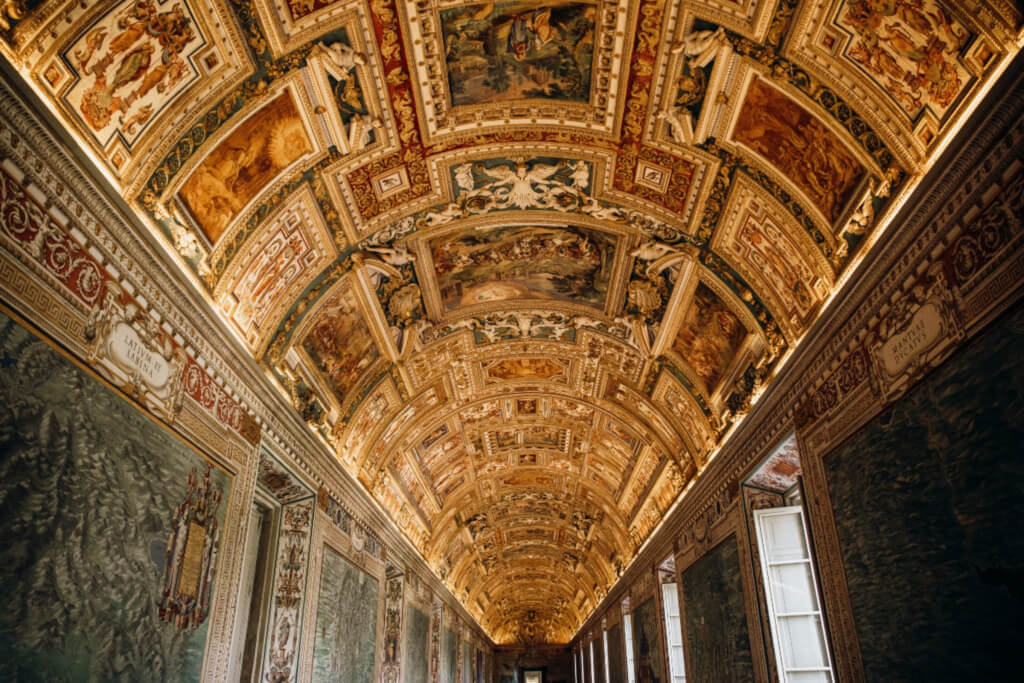
10 Fascinating Facts About Vatican City: The World’s Smallest State
May 21, 2025
Question: What is the most mysterious country on the planet, a place where you don’t need a passport or visa to enter, a nation that hires soldiers from another country to protect it, a country that has a population of around 800, it’s only national dishes could be summed up as a small, circular piece of unleavened bread and a sip of red wine, and whose head of state leads the country until he (and it’s always a he) dies?

Although the Vatican is visited by an estimated 5 million people a year, this fascinating site still conceals many secrets.
If your answer is the Vatican—ding, ding, ding—congratulations, you win a delicious dinner for one of a piece of unleavened bread and a sip of red wine!
All kidding aside, although one of the most unique countries in the world, there are still a few facts about Vatican City that few people know. It’s also very nebulous and mysterious. Books have been penned, movies have been produced, and academic papers have been written in an attempt to penetrate the walls of this tiny 121-acre nation-state, but they’ve only served to make it even more enigmatic and intriguing.
And if you want a closer look, even an insider’s view of this mysterious nation, it’s a great idea to take a guided tour of the Vatican.
With all that in mind, here are 10 mind-blowing facts about Vatican City.
Table of Contents
ToggleUnique Features of Vatican City
Bruno’s gaze
While the head of the Catholic Church has been seated here for centuries, Vatican City has only officially existed since 1929. Before that, there were the Papal States, a huge swath of Italy ruled by the pope for about one thousand years; at its largest, the Papal States were 10,000 square miles. It all ended in the 19th century with the creation of a unified Italian state. The Papacy and Italian authorities were at odds.
As you can see when you walk around Prati, the neighborhood that surrounds current-day Vatican City. Roman urban planners decided to give an implicit middle finger to the Vatican in the late-19th century by naming many streets and squares around Vatican City with historical figures who had gotten on the pope’s bad side.
So, you may notice that the main square just a few feet from the border is called Piazza Risorgimento, the name for the fight for Italian unification. There is a street named for pope-hater Cola di Rienzo. And in Campo de’ Fiori, just across the river, a solemn-looking sculpture of Giordano Bruno who was burned in this square by the Vatican. The erectors of the statue intentionally put Bruno’s gaze straight at the Vatican.
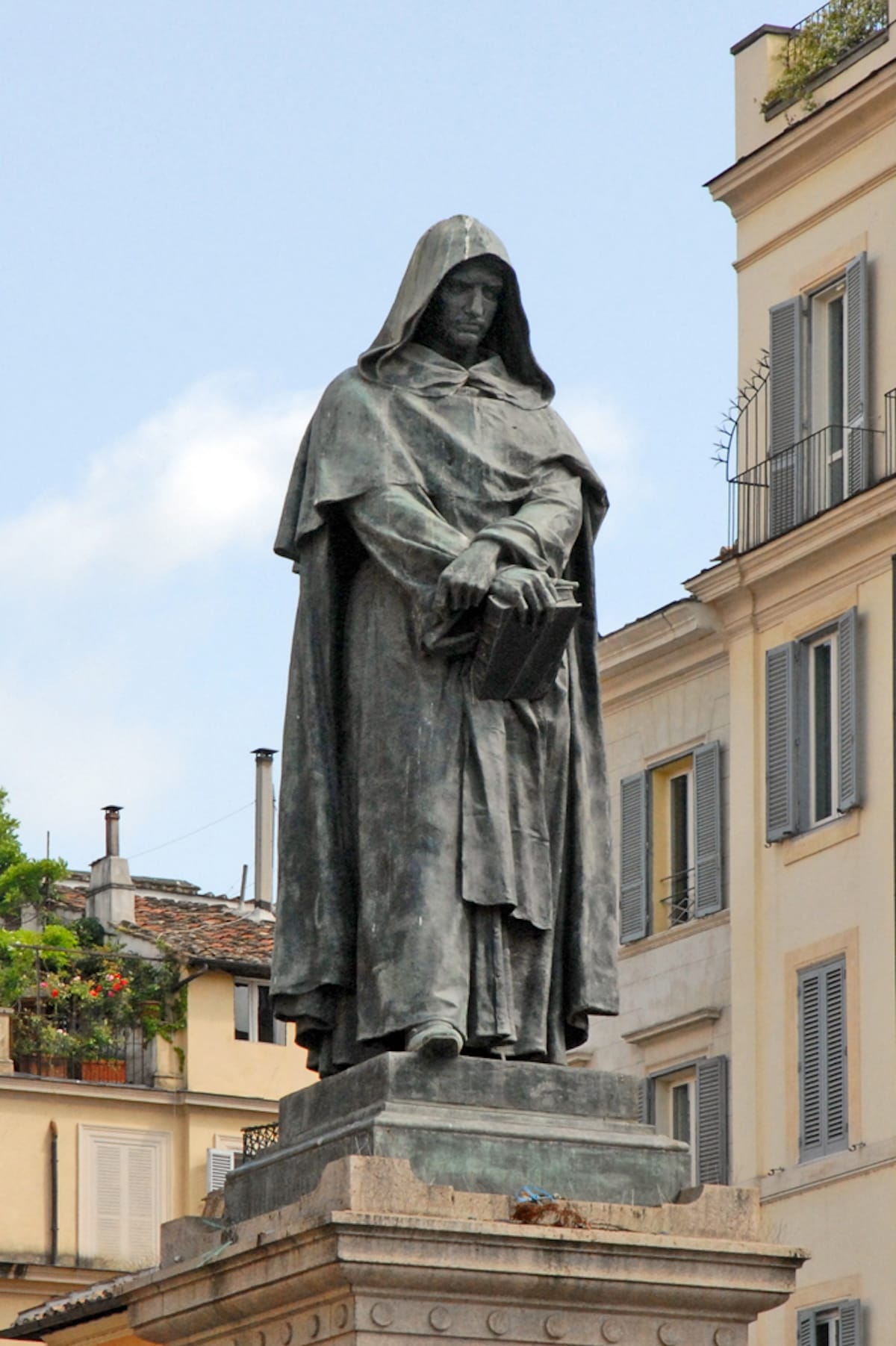
The statue of Giordano Bruno looks grumpily in the direction of the Vatican. Photo credit: dalbera
Mussolini’s “gift”
The micronation known as Vatican City was born out of a treaty. In 1929, after much fighting (and passive-aggressive street naming practices), Pope Pius XI and Benito Mussolini came to an agreement. The Lateran Treaty recognizes the existence of the Italian state and the Vatican. And this micronation was born.
To celebrate the treaty, Mussolini gave a “gift” to the Holy See—something many architects of the centuries had been chomping at the bit to do: create a dramatic approach to St. Peter’s Basilica. The 500-yard Via della Conciliazione (Street of Conciliation) bulldozed right through a series of medieval buildings to create a wide boulevard flanked by fascist-style architecture.
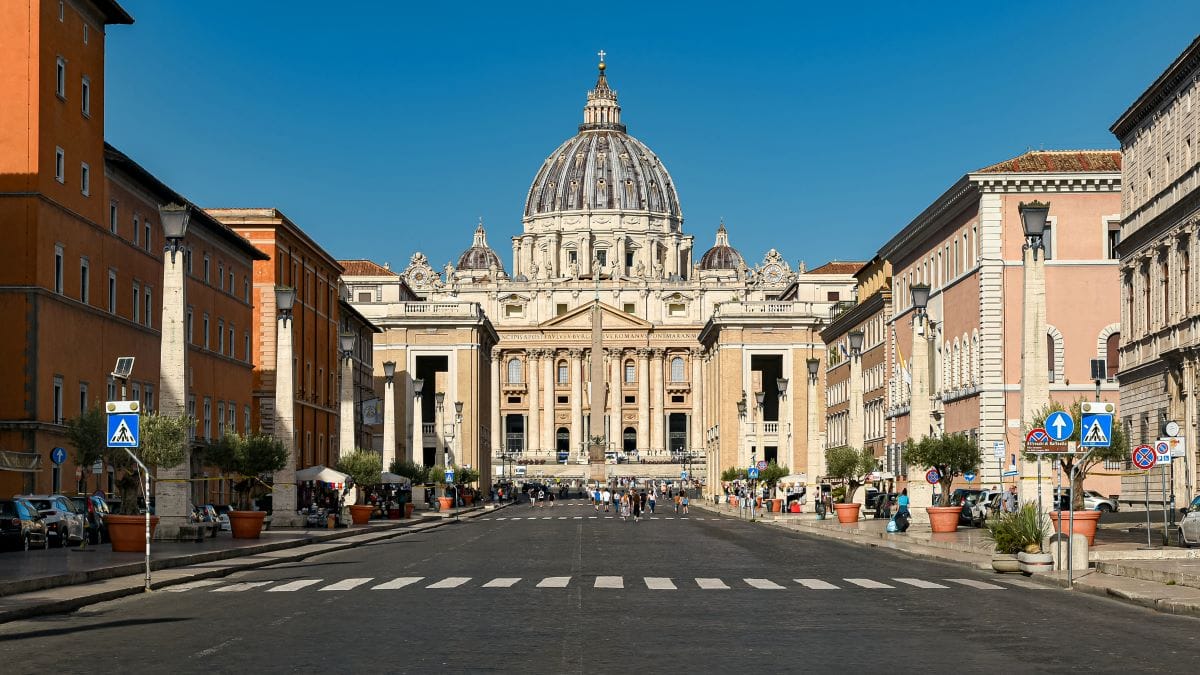
The Via della Conciliazione is one of the most dramatic approaches to one of the most impressive sites on the planet. Photo credit: Jorge Franganillo
Overdue books
The Vatican has its own army—in the form of the peacock-esque Swiss Guards—as well as its own postal service, bank, currency, publishing house, commissary, pharmacy, railway station, electrical generating plant, and even two jail cells.
And, of course along with its very popular museums, the Vatican has its own library, one of the oldest functioning libraries on the planet. Founded in 1471, the library boasts 75,000 manuscripts and 1.1 million printed books that are stocked in 37 miles of stacks, many of which are held underground. It’s a very popular myth that the library is the depository for the largest porn collection on the planet.
Many of the Vatican library’s most priceless works were lost to Spanish and German invaders during the infamous 1527 Sack of Rome, but one of the most precious manuscripts held there today is the Codex Vaticanus, the world’s oldest copy of the Bible, written by hand during the reign of Constantine, the first Roman Emperor to legalize Christian worship in the early fourth century.
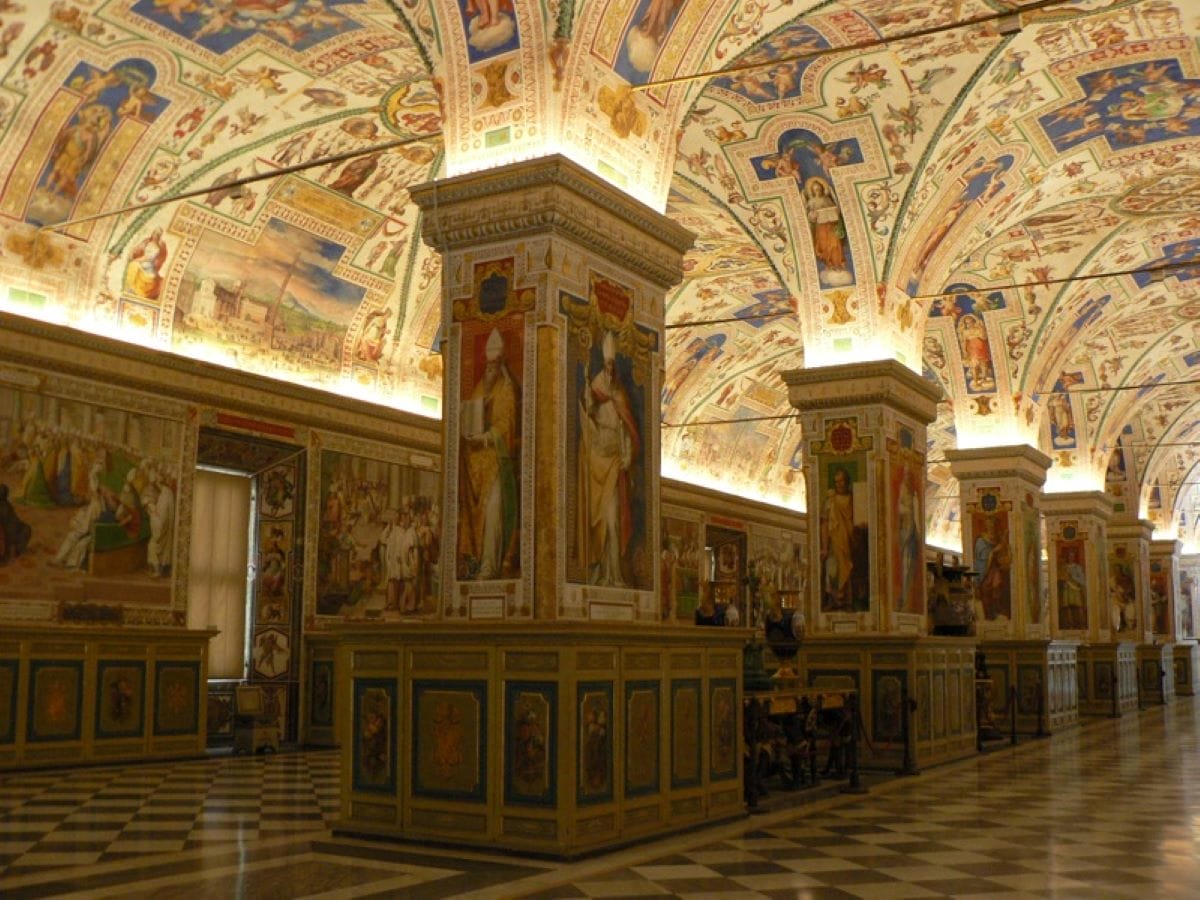
Not many people visit the Vatican’s library, but it’s definitely worth a stop. Photo credit: candiche
“Snakes and bad wine”
In the first century A.D., Roman writer and philosopher Pliny the Elder said Vatican Hill was where you went to find snakes and bad wine. It’s also the site of an ancient necropolis. It was here, many people believe, where St. Peter was crucified. Hence the reason why the monumental St. Peter’s Basilica was built smack on top of the old cemetery. The tombs are still there. You just have to know where to find them. And thankfully, the Vatican allows visitors to wander down below the Vatican to get a glance at this ancient necropolis. You can stroll around millennia-old streets lined with millenia-old mausoleums. The highlight—especially if you’re a Catholic—is a peek at the supposed bones of St. Peter resting in his (well-lit) tomb.
One curious addendum: In 1942, St. Peter’s bones were discovered by archeologists and then promptly lost. They were rediscovered—in a cardboard box stashed away in a back Vatican office—and a decade later placed back in the spot where they were originally found.
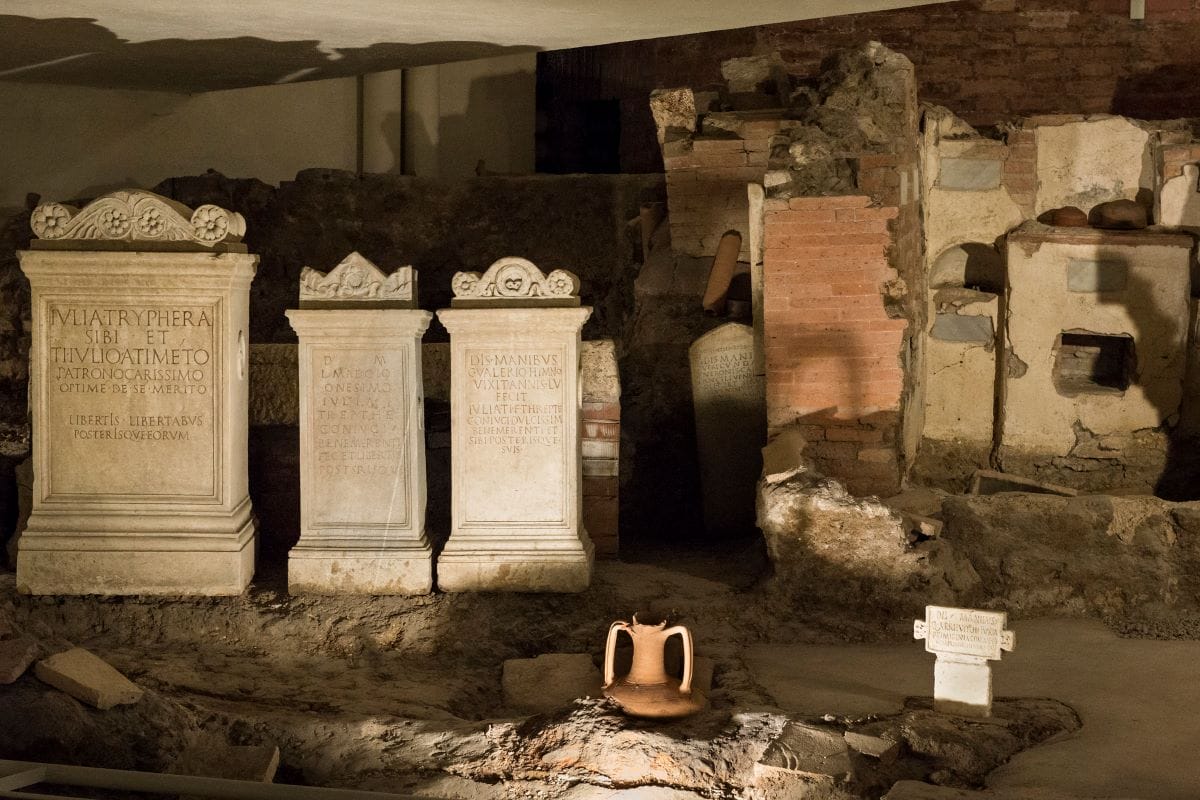
For those looking for the creepier side of the Vatican, head on down to the ancient necropolis. Photo credit: Egisto Sani
Art and Architecture Highlights of the Vatican
Old St. Peter’s
Before the gargantuan St. Peter’s Basilica that you see today, there was the old St. Peter’s. One fact about Vatican City few people know is that the original church was erected in the four century and was ordered by Roman Emperor Constantine, who famously (and supposedly) had a vision of a burning cross in the sky before a battle at the Ponte Milvio just outside of Rome in the year 312 and converted to Christianity as a result. There is nothing left of the old St. Peter’s, so you’ll just have to use your imagination.
Renaissance architecture all-stars
The grand St. Peter’s Basilica might be the most famous Christian place of worship in the world. The gargantuan structure was completed in the early 17th century, exactly 1,300 years after the first St. Peter’s was completed on this site. An all-star team of legendary Renaissance and Baroque architects and artists gave a hand in building the “new” St. Peters, including Bramante, Michelangelo, Raphael, and Bernini. Interior highlights that can’t be missed are Michelangelo’s “Pieta” and Bernini’s monumental brass “Baldacchino,” a 100-foot tall canopy that serves as the focal point of the church.
Much of the marble used to build St. Peter’s was filched from the Colosseum. Pope Nicholas II had 2,500 wagon loads of marble brought over from the ancient stadium. And to make the Baldacchino, Bernini had much of the roof of the Pantheon stripped of its bronze.
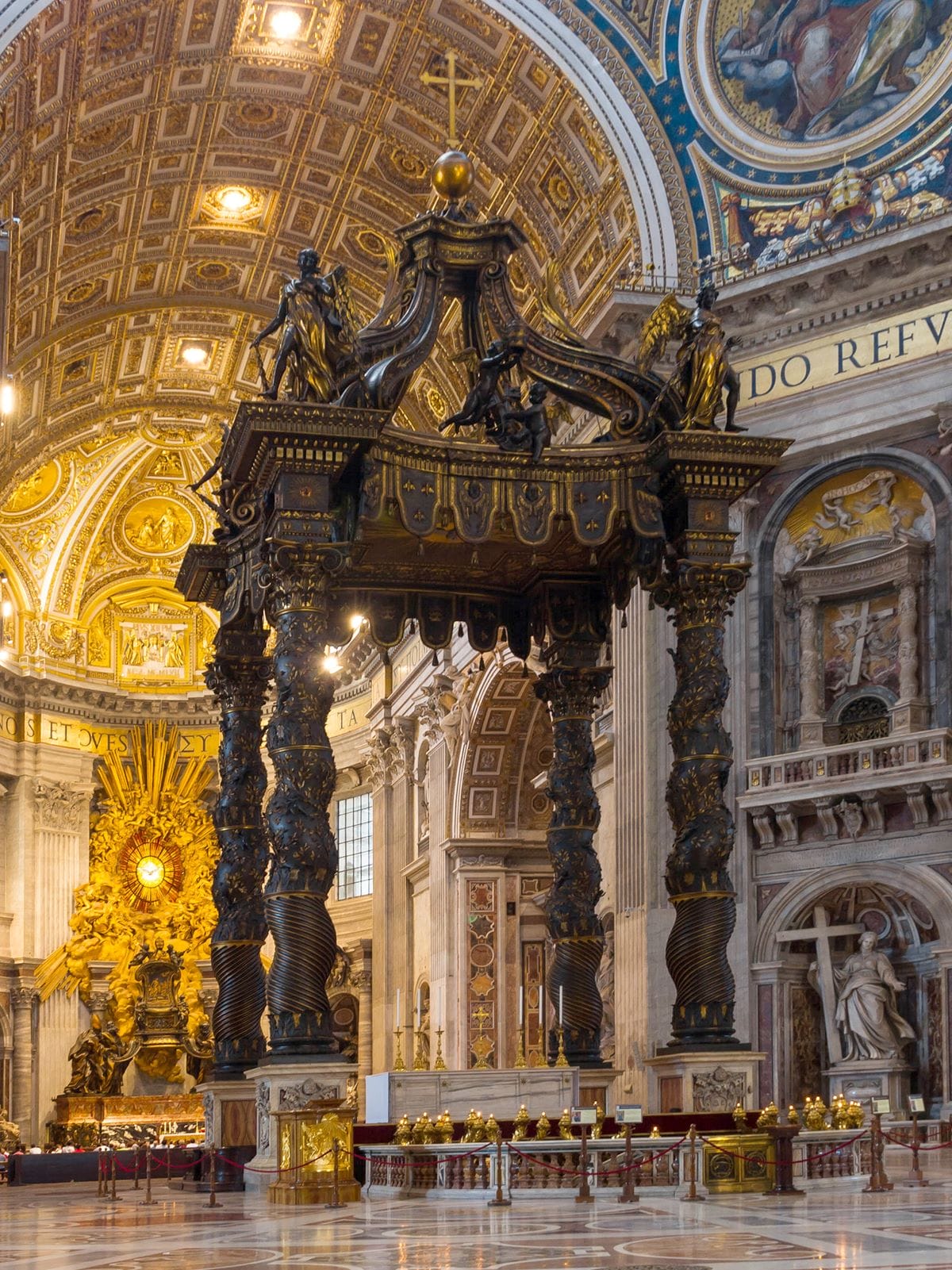
This massive bronze canopy was commissioned to mark the place of Saint Peter’s tomb underneath. Photo credit: Jebulon
The arms of St. Peter
St. Peter’s Square is one of the most dramatic public spaces in the world. And most of the thanks goes to Bernini, who designed the two dramatic “arms” that hug the circumference of the oval-shaped space. In all, there are 284 columns supporting the two colonnades and 140 statues of saints standing atop. The square is centered by a massive 3,300-year-old Egyptian obelisk, which took 800 people to erect in the late 16th century.

St Peter’s Square is one of the most visited places in the world.
St. Michelangelo
In the early 16th century, Michelangelo was asked to paint something simple on the ceiling of the Sistine Chapel. But the famed artist, who at this time was much more well known as an architect, decided to challenge himself. The result is the most famous fresco in the world. It took the great artist four and a half years standing on a 60-foot-high scaffolding. Toward the end of Michelangelo’s life, he returned to paint the “Last Judgment” on the far wall. If you look closely, you can see how the painting style of the day had changed: from the harmonious Renaissance style on the ceiling to the more chaotic and ornate mannerism on the back wall. The image of St. Bartholomew holding his own skin is actually a self-portrait of Michelangelo.
And ignore the frescoes on the side walls at your own peril: they were painted by famous Renaissance artists, including Botticelli, Perugino, and Luca Signorelli. If you want to see the Sistine Chapel without the crowds, check out the “Pristine Sistine” guided tour.

The Sistine Chapel is a highlight of any trip to the Vatican.
Surprising Facts about the Vatican
Sanctus Pecunia
If you use an ATM or cash machine in Vatican City, you’ll have the option to conduct the transaction in Italian, English and … Latin. Only agree to it if you can actually understand inserito scidulam quaeso when it pops up on the machine in front of you. If you want some sanctus pecunia, or holy money, wait until you get to Vatican City to take some cash from the ATM.
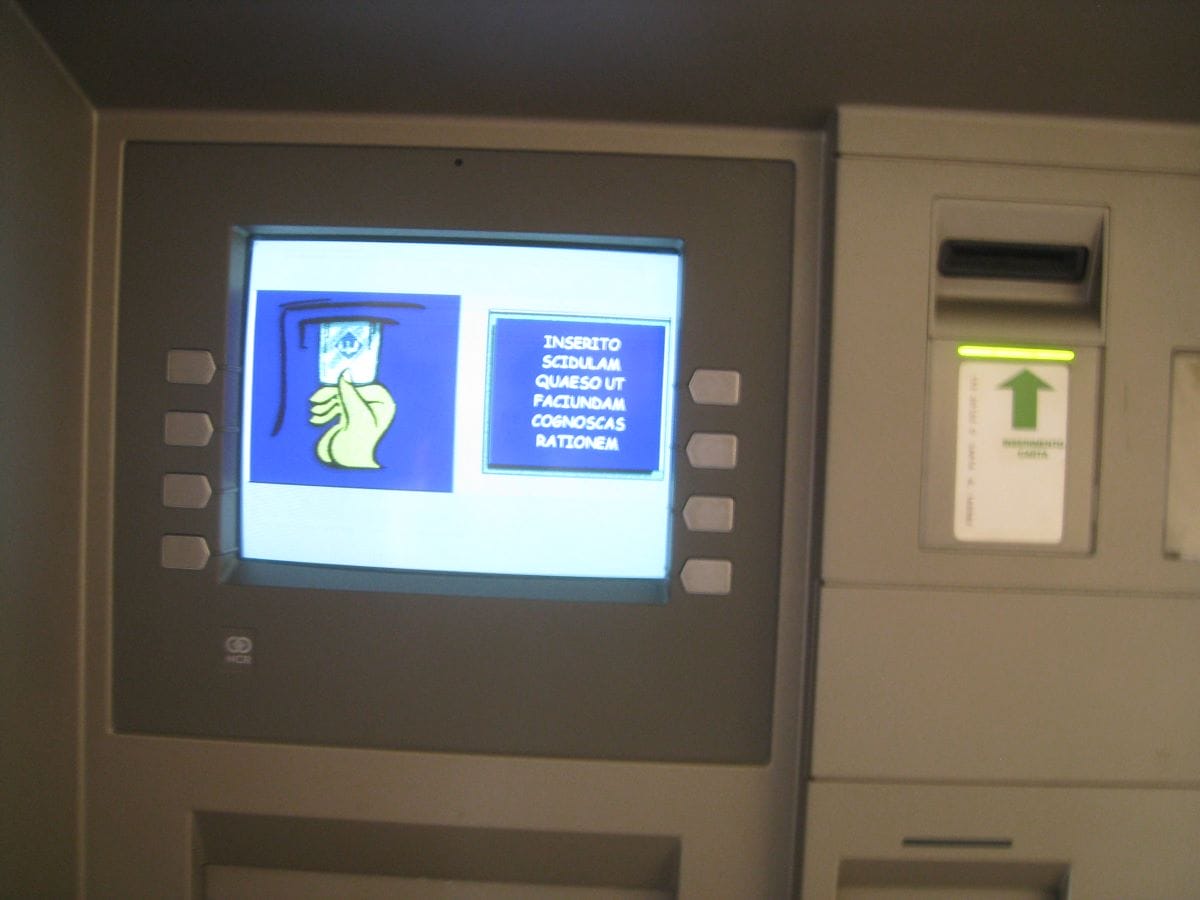
Don’t forget to withdraw some holy money while in this holy city. Photo credit; Seth Schoen
The crime and wine capital of the world
Because the population of Vatican City is so small, it often tops the list of the most per capita statistics. Two of the more intriguing are that Vatican City is at the top of the list for most crime (overwhelmingly petty theft) and the most wine consumed.
The Role of the Pope
Whether referred to as the Supreme pontiff, Roman pontiff, or sovereign pontiff, the pope is the bishop of Rome and the head of the Catholic Church. Although it gets a little complicated, the pope’s office is called the papacy, but the jurisdiction of which he is the head is called the Holy See, which is what establishes the Vatican as a sovereign entity.
In the past, popes were charged with spreading Christianity and acting as political mediators when necessary. Today, the pope continues to focus on religious matters, but also has an extensive diplomatic, cultural, and spiritual influence around the world.
If you’re looking to unravel more little-known facts about Vatican City, make sure to sign up for one of our small group tours of the Vatican. Led by local guides, you’ll not only be able to skip the lines, but will have privileged access to this Sistine Chapel at night or early in the morning, enjoying your time in this beautiful site without the massive crowds that build up throughout the day.
by David Farley
View more by David ›Book a Tour

Pristine Sistine - The Chapel at its Best
€89
1794 reviews

Premium Colosseum Tour with Roman Forum Palatine Hill
€56
850 reviews

Pasta-Making Class: Cook, Dine Drink Wine with a Local Chef
€64
121 reviews

Crypts, Bones Catacombs: Underground Tour of Rome
€69
401 reviews

VIP Doge's Palace Secret Passages Tour
€79
18 reviews

Legendary Venice: St. Mark's Basilica, Terrace Doge's Palace
€69
286 reviews









